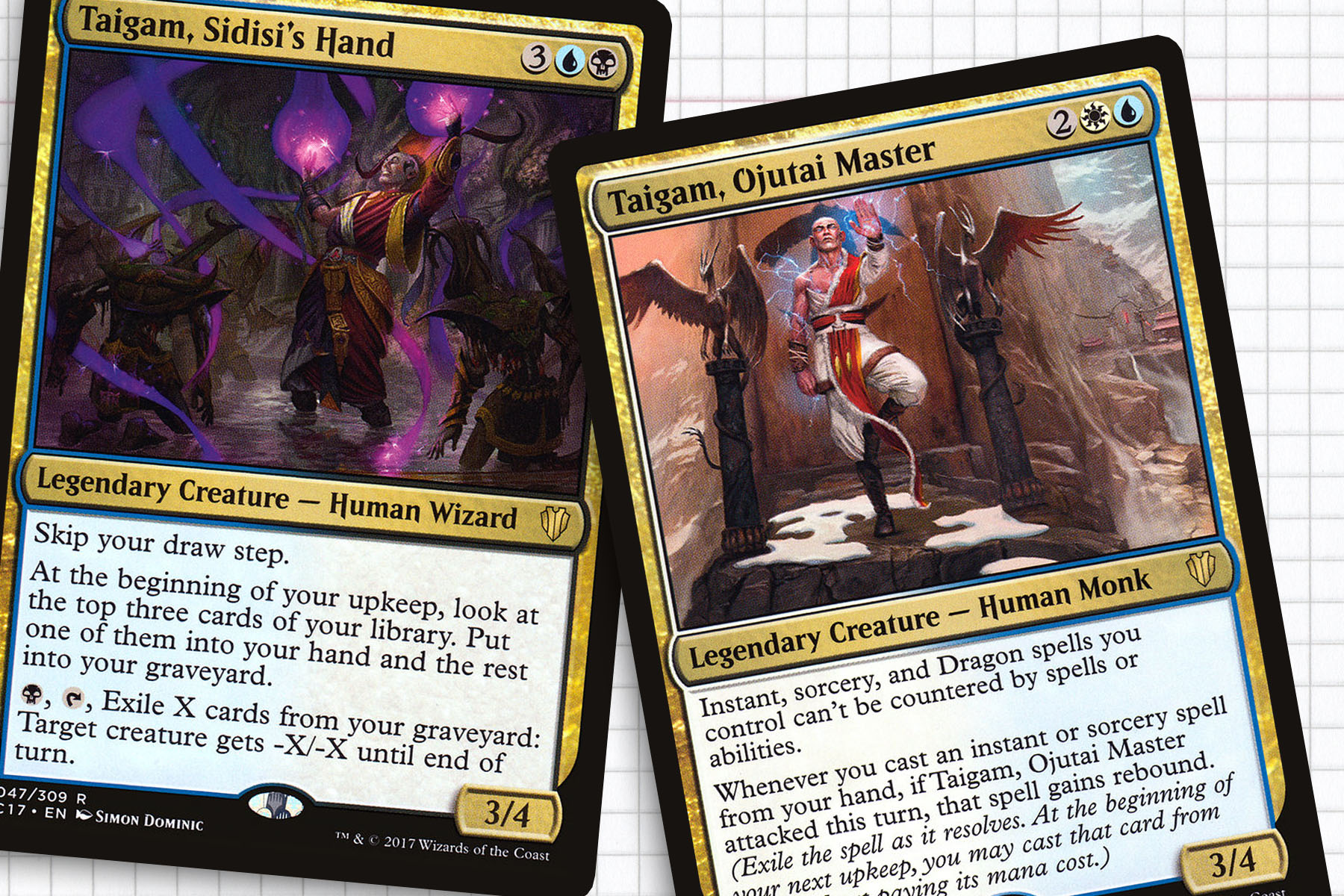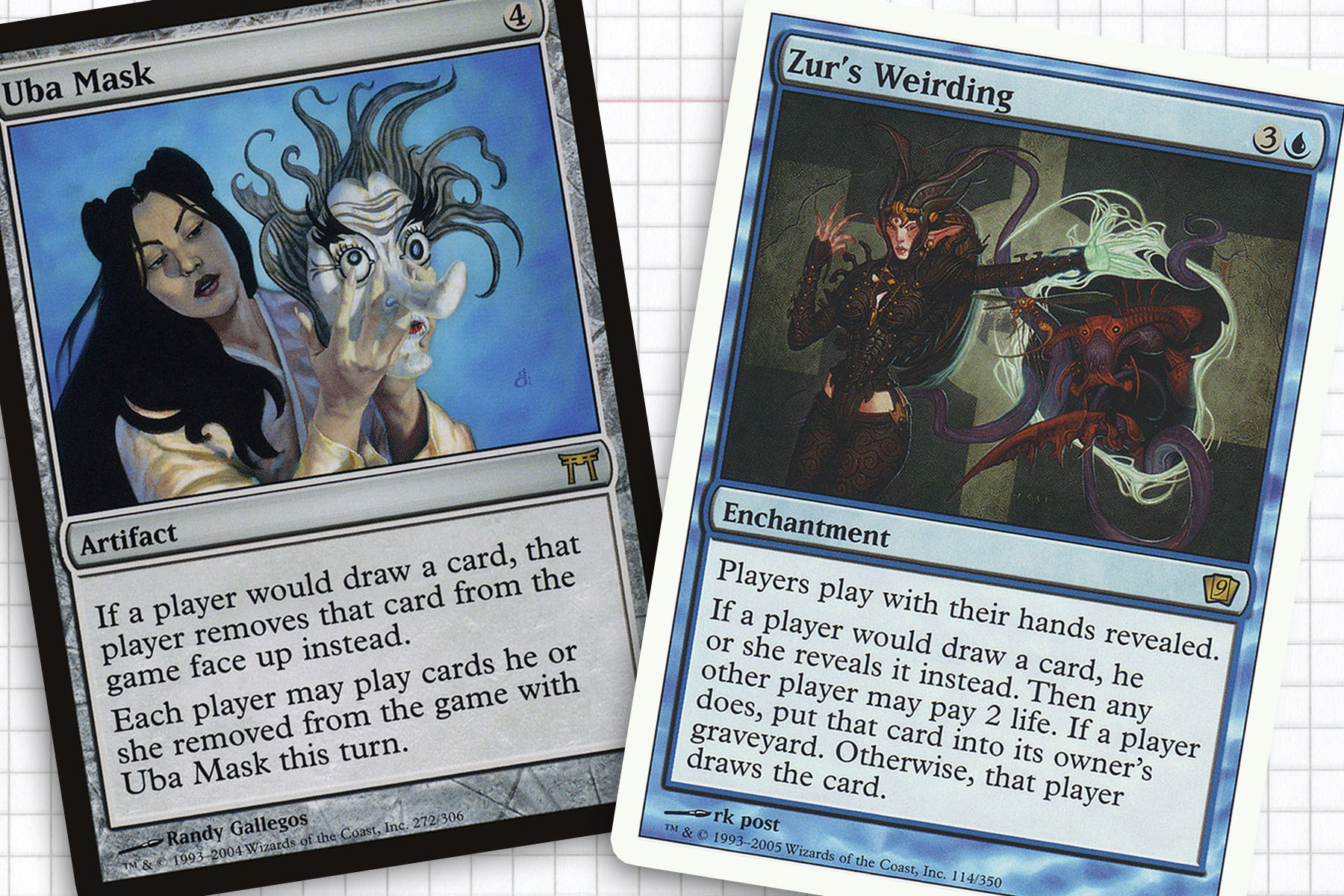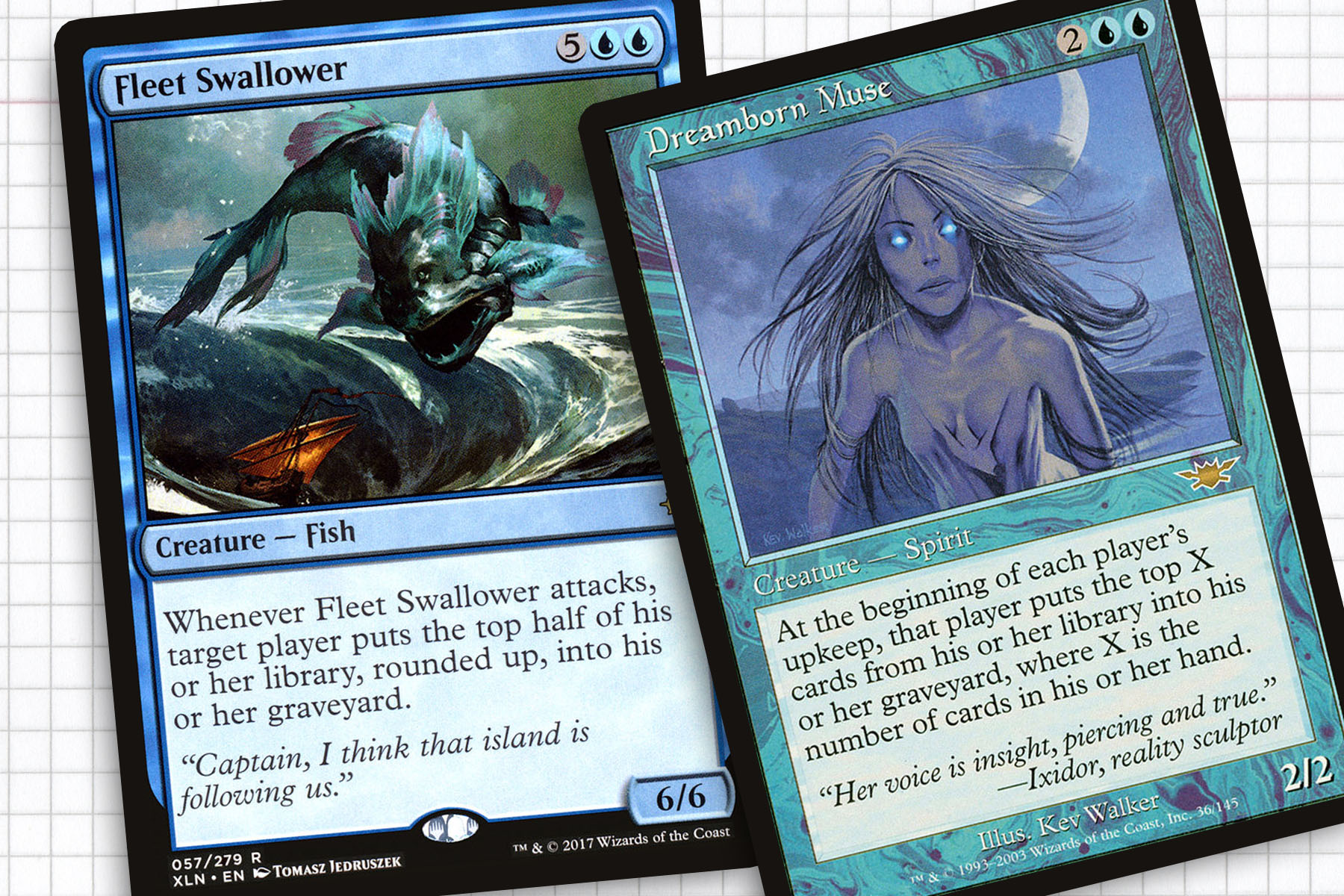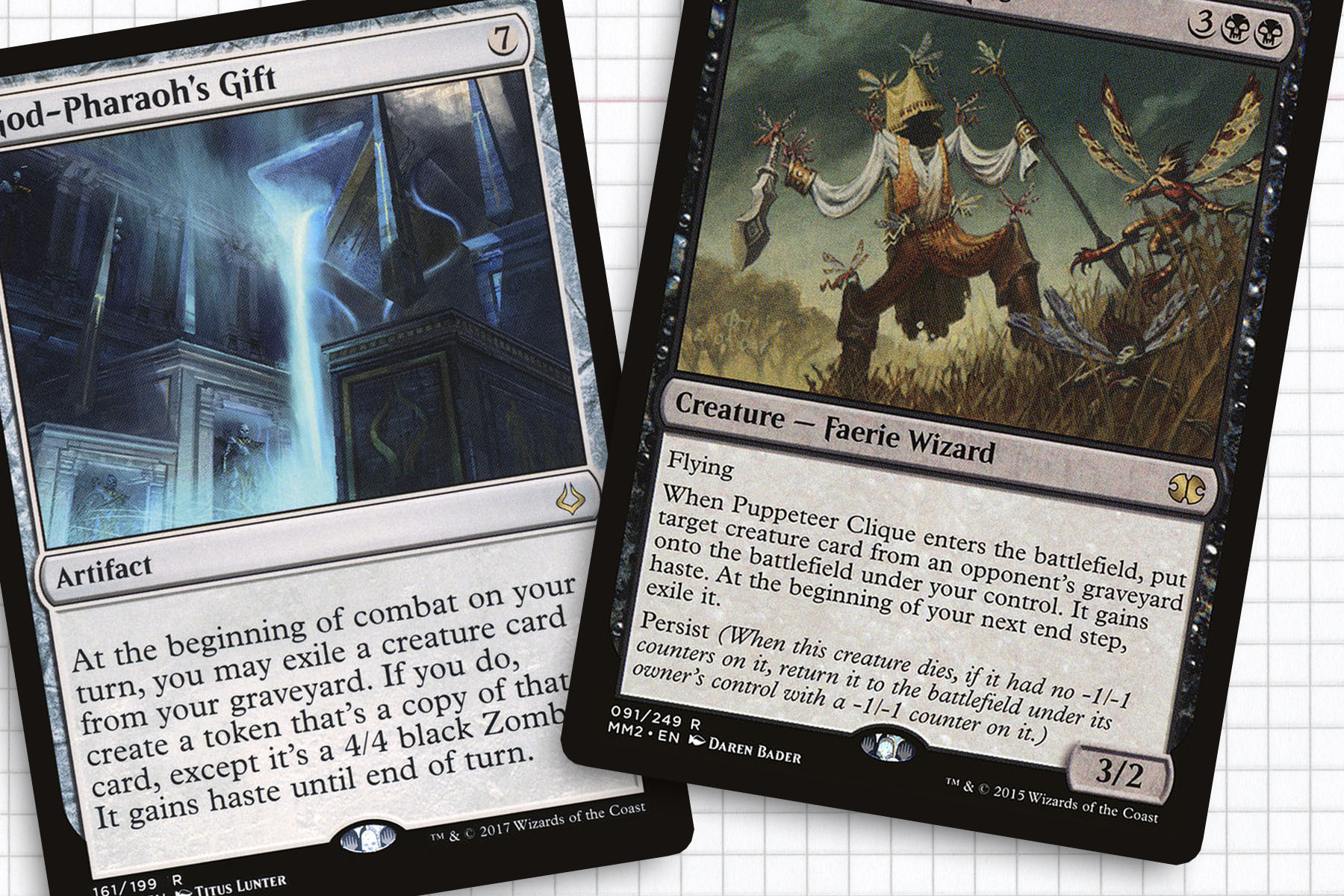As I alluded to last week, I drew influence for my Nahiri Rebels from my friend Alex Szeto and his Lin Sivvi Rebels deck. His deck was constructed from his own design resistictions, every card—general included—must cost less than one US dollar. While not a completely original concept, the idea to create a metagame where all the decks in a game were built under this restriction is original in my opinion. Very quickly the variant of Commander became known as Dollar General or 1DH to us Minnesotans; and has been well embraced, especially as the “weekend metagame” format for in-house events.
Despite the fact that I played almost no Magic for the nine months following the birth of my son, I have played just about a dozen games of straightforward Dollar General in the approximately 18 months the format has been en vogue in Minneapolis. But it’s the special events that have left the biggest impression on me. I wrote about the Iron-Man Dollar General event I participated in at GP Minneapolis in 2017, but I never went in-depth on the Dollar General deck swap event we did on the Friday of GP Minneapolis this year at the home local Agent of Bolas, HobbesQ.
The idea was simple and probably obvious by the above description: participants built Dollar General Commander decks and tossed them into a pool to be randomly given to other participants. I had built a Jodah, Archmage Eternal deck, because I just can’t stop building Jodah decks. In return, I was randomly gifted a Taigam, Sidisi’s Hand deck, which is the topic of today’s article. I shuffled up the deck and played it blind, trusting that the builder, Nathan Weber, had built in some sweet interactions to be exploited.

Tale of Two Taigams
Taigam as a character is fairly interesting case. Like many residents of a plane quoted in flavor text or attributed in card names, he existed through the story “Taigam’s Scheming” and the cards Dutiful Return, Shambling Attendants, and Taigam’s Scheming in Khans of Tarkir as a Jeskai defector. He was later confirmed to still be around in the new timeline—remaining with the clan now known as the Ojutai—with the story “A Tarkir of Dragons” and Taigam’s Strike in Dragons of Tarkir. Fans of the character suspected that he would be seen in card form at some point during the block, but because of the structure of the block’s legendary cycles, he was left out. This “oversight” by the design team would be rectified with Commander 2017, in-which we were given both timelines’ version of Taigam.
To my knowledge, neither version has created much buzz or spawned decks. With that shortsighted bias, I admit I was a little puzzled when I discovered that had gotten Taigam, Sidisi’s Hand in the deck lottery. Even with my trust in Nathan’s deckbuilding abilities, I had to wonder what this deck could possibly be doing and how it might take advantage of the abilities inherent to the general.

A Different Kind of Card Draw
It was good fortune that the opening hand I kept in my game with the deck had Uba Mask in it. The inclusion of the card felt on-par with my use of Spreading Plague in my Eldrazi deck. Since it was part of my game plan from the beginning, it brought context I likely would not have seen if I didn’t have that piece of the metaphorical puzzle. Uba Mask changes the way that players have to look at the cards they draw, since they are only available to them for the turn. This often meant that plans that my opponents would verbalize before their turns would be put on hold because they felt that needed to cast the spell the just exiled for fear of missing out on it. Taigam sidesteps this taxing of our play pattern by allowing us to skip our draw step and also by giving us a card selection that is not actually draw a card. That makes for a wonderful build-around.
Nathan skillfully built in other forms of card draw akin to Taigam: Epiphany at the Drownyard, Fact or Fiction, Sphinx of Uthuun, and Strategic Planning. In combination with the Mask or the alternate build-around, Zur’s Weirding, we are neither forced to be exiling or putting our cards into the graveyard without purpose. Even without these interactions, the high saturation of card filtering is great and feeds the graveyard strategy I will be discussing later on. While I may have made my own brand of play mistakes, I never felt like I was out of options.

Built-in Inevitability
The original alternate win condition of Magic is decking your opponent. The strategy was given legitimacy and the name “mill” by Antiquities’ Millstone. I’ve been a fan of milling from the day I learned of it. In dedicated lists I have gone on winning streaks in Modern, but I like it most in Limited where a single milling spell often means inevitability if the game goes long. But I’m realistic enough to understand that that cannot be a core strategy in Commander for most decks.
With your unique blend of cards, it’s not the Plan A to deck the rest of the table; but it’s certainly can be what you play for in the long game. The biggest lesson I have learned with mill is that you’re not likely to succeed if you spread out the milling when you have a targeted option. Because of that, we want to be unrelenting when we use Fleet Swallower, Patient Rebuilding, Thought Dissector, and Undercity Informer and try to target the same player with every activation, unless we’re given a reason to aim somewhere else. Of course, if unrestricted by the monetary value Traumatize would also be a wonderful addition to this deck.
My favorite card for this strategy has to be Dreamborn Muse. The Muse punishes players who are keeping bigger hands or who have been targeted by River’s Rebuke. It also plays well when players have cards stranded because they are preoccupied with cards exiled by Uba Mask. (Like I stated, all star of the deck.) Either way, even a single rotation around the table can set up major graveyard shenanigans or the inevitability of decking. But this deck utilizes repeatable mill towards its strongest theme: using everyone’s graveyard as your resource.

Plundering Graveyards
Knowing from the moment we select our deck that the graveyards are going to valued resource, we can make great use of the cards piling up around the table. As such, we want universal tools like Extract from Darkness or Body Double that look to any graveyard for able bodies. With all the mill cards, we can keep our sights set on other people’s graveyards for use with Diluvian Primordial, Puppeteer Clique, and Memory Plunder. Chancellor of the Spires.
While you’re stealing creatures out of everyone else’s graveyards, your graveyard is ripe for exploitation as well. Taigam is already pushing cards from our library to the graveyard and will probably improve with Surveil in the format. Vizier of Many Faces is the most flexible embalm creature, and fits perfectly here. Phyrexian Delver and Stitch Together frequently end up among the extra cards I cut from decks, but they have a chance to shine here in 1DH. Demon of Dark Schemes is great as both removal and reanimation. And the repeatable power of God-Pharaoh’s Gift or the one-shot version, Hour of Eternity, mean that we’ll be getting a lot of use out of our creatures.
With the wealth of options that we had at Hobbes’s place during the GP, we only played one game. But I found that game enlightening, even if I didn’t get to execute on all of my plans as they had been written up. In Dollar General you see a different class of cards or powered-down alternatives, and that gives the format a lot of merit.
Overall I had a great time piloting Nathan’s Taigam Dollar General deck. He took a general that I hadn’t really thought about and made something special out of it—which is really what you should do with any general. Exploring how he constructed the deck will improve my deckbuilding going forward. I’ve always been a fan of mill, but I admit that it’s a hard thing to sell in a hundred-card format. But this deck has a sense of inevitability that gives you a fighting chance.
Ryan Sainio is a Graphic Designer who writes about EDH, the story of Magic and the EDH community in his down time. He has been playing Magic: The Gathering since 7th Edition in 2002 and values flavorful and fun gameplay over competitively optimized decks.

